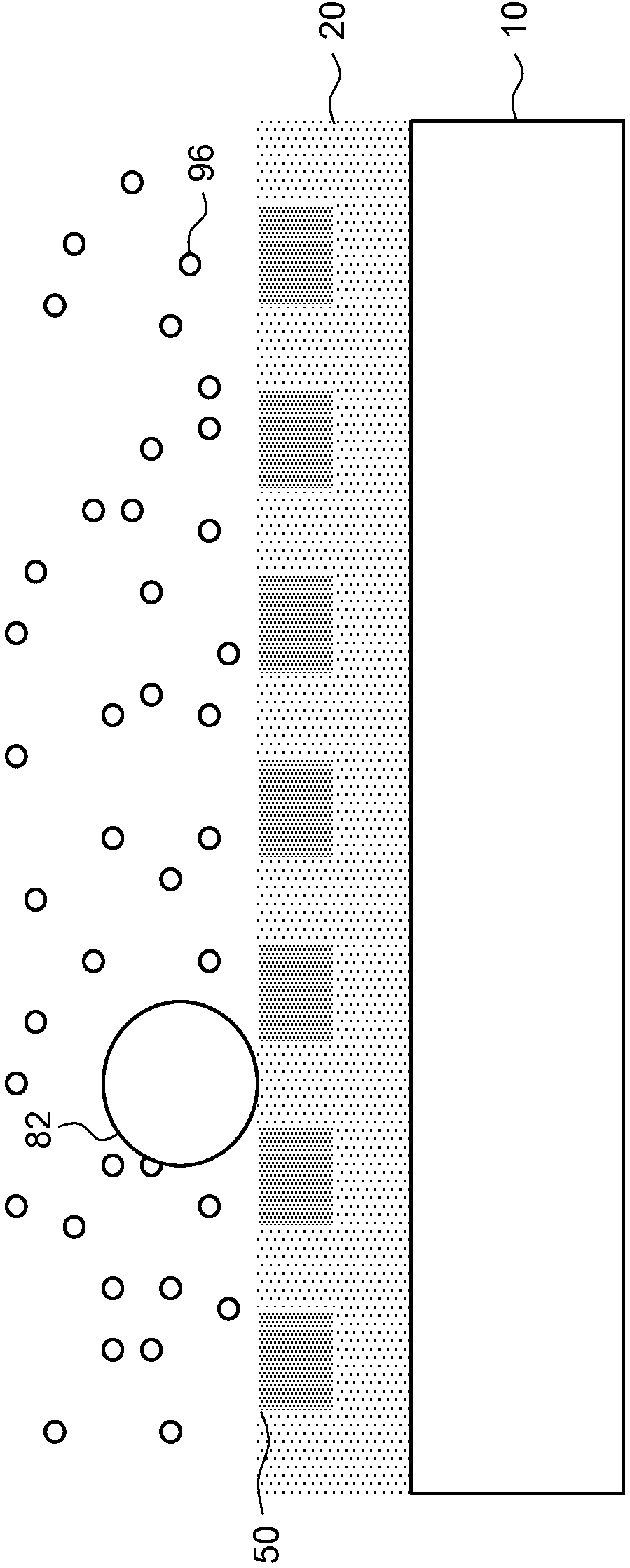Method of forming conductive films with micro-wires
一种微丝、导电组合物的技术,应用在电路、薄料处理、电气元件等方向,能够解决微丝突出微通道、断裂等问题,达到改善电导率和透明度、优异光学性质、改善微丝电导率和基底透明度的效果
- Summary
- Abstract
- Description
- Claims
- Application Information
AI Technical Summary
Problems solved by technology
Method used
Image
Examples
Embodiment 1
[0126] Invention embodiment 1: Formation of conductive films containing microfilaments
[0127] A polyethylene terephthalate film having a thickness of about 125 μm was surface-treated with a latex containing polyvinylidene chloride to form an adhesion-promoting subbing layer. 34.0 g of Epon resin SU-8, 6.0 g of Coatosil MP-200, 4.8 g of triarylsulfonium hexafluorophosphate (mixed, 50% dispersed in propylene carbonate) and 55.2 g of methyl ethyl ketone A coating solution composed of (MEK) was applied as a photocurable composition on the base layer and dried to form a photocurable layer having a nominal dry thickness of about 12 μm. The photocurable surface of the resulting dry film was then covered with a protective sheet approximately 25.4 μm thick, one surface of which was treated with a silicone release coating. The protective foil can be easily separated from the photocurable layer.
[0128]At 90° C., the photocurable layer on the substrate was continuously extruded at...
PUM
| Property | Measurement | Unit |
|---|---|---|
| haze | aaaaa | aaaaa |
| transparency | aaaaa | aaaaa |
| transparency | aaaaa | aaaaa |
Abstract
Description
Claims
Application Information
 Login to View More
Login to View More - R&D
- Intellectual Property
- Life Sciences
- Materials
- Tech Scout
- Unparalleled Data Quality
- Higher Quality Content
- 60% Fewer Hallucinations
Browse by: Latest US Patents, China's latest patents, Technical Efficacy Thesaurus, Application Domain, Technology Topic, Popular Technical Reports.
© 2025 PatSnap. All rights reserved.Legal|Privacy policy|Modern Slavery Act Transparency Statement|Sitemap|About US| Contact US: help@patsnap.com



